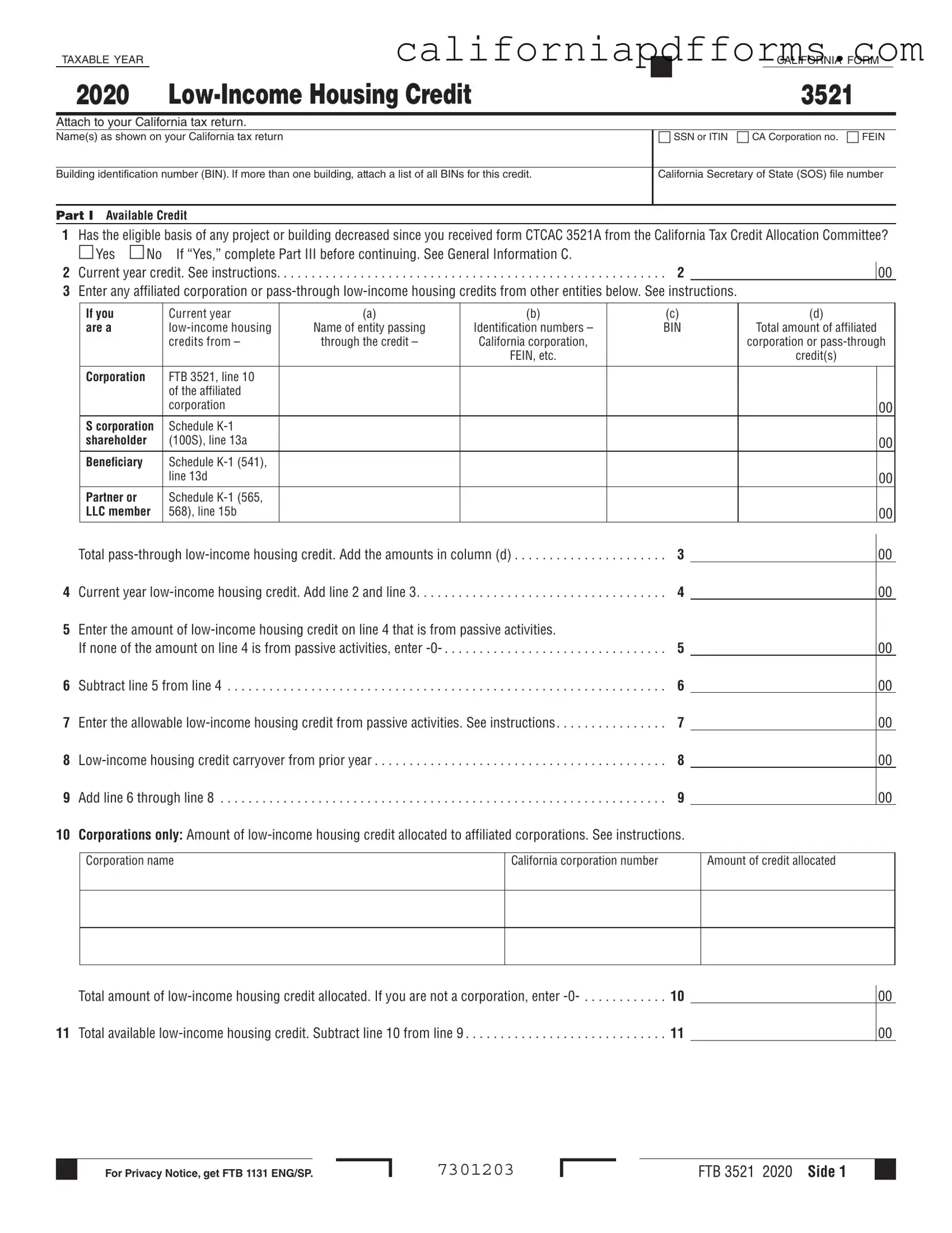The California Form 3521 is used to claim the Low-Income Housing Credit for the tax year. This form must be attached to your California tax return. It helps taxpayers who invest in low-income housing projects to receive tax credits based on their investment.
Any taxpayer who has invested in low-income housing and wishes to claim the Low-Income Housing Credit must file Form 3521. This includes individuals, corporations, and pass-through entities like partnerships and S corporations.
To complete Form 3521, you will need:
-
Your name(s) as shown on your California tax return.
-
Your Social Security Number (SSN) or Individual Taxpayer Identification Number (ITIN).
-
The Building Identification Number (BIN) for each project.
-
Details of any affiliated corporation or pass-through low-income housing credits.
What should I do if the eligible basis of my project has decreased?
If the eligible basis of any project or building has decreased since you received Form CTCAC 3521A, you must complete Part III of the form. This section requires specific information about the decrease and its impact on your credit calculation.
How do I calculate the current year low-income housing credit?
To calculate your current year low-income housing credit, you need to add the amount from line 2 (current year credit) and line 3 (pass-through credits). This total will give you the amount of credit you can claim for the current tax year.
What happens to unused credits?
If you have unused low-income housing credits, they can be carried over to future tax years. You will need to complete Part II of the form to determine the amount of credit carryover available for future use.
Form 3521 must be filed along with your California tax return by the due date of that return. For most taxpayers, this is typically April 15th of the following year. Be sure to check for any updates or extensions that may apply.
